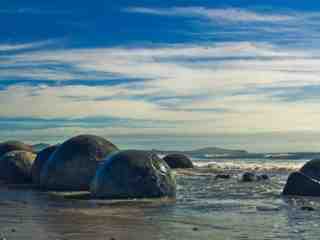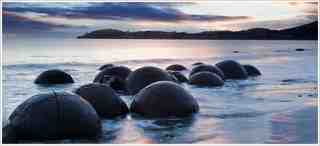Source: http://en.wikipedia.org/wiki/Pacaya
Tuesday, May 28, 2013
#825 Pacaya Volcano, Guatemala
Source: http://en.wikipedia.org/wiki/Pacaya
Sunday, May 26, 2013
#826 Umm Al-Aish Satellite Dish, Kuwait
 |
| www.evidence.org.kw |
The Umm Al-Aish area was used for telecommunications, including telephone and wireless for ships, planes, especially the military. Unfortunately, I never saw it for myself and now it's too late. In 2009 the Kuwaiti government dismantled the two satellite dishes to sell for scrap metal, which is too bad as it was popular to visit and an important monument to their struggle against their neighbor.
 |
| www.evidence.org.kw |

 |
| www.evidence.org.kw |
http://www.arabianbusiness.com/kuwait-scraps-obsolete-satellite-station-41095.html
Saturday, May 25, 2013
#827 Islas Uros, Lake Titicaca, Peru
In the Southern Peruvian and Northern Bolivian altiplano (Andean plateau) is one of the highest lakes on earth, which according to Andean belief, gave birth to the sun, father (Manco Capac), and mother (Mama Ocllo) of all Incas: Lake Titicaca. Relics of monuments from the Incas remain, as well as from the pre-Incan Pukara, Tiwanaki and Collas, such as the dwarfed burial towers and conical stone penises.
The main Peruvian town connecting Lake Titicaca to the world is Puno, a bit of a scrappy town with a sleazy feeling. However, the reason visitors come here is to visit the amazing islands in the lake. In particular, the famous Islas Uros, which are constructed from floating totora reeds, are only 5km from Puno.
The Uros people collect these reeds from the shallow areas of the lake and use them to eat, make their homes, boats, and other crafts. They began this lifestyle centuries ago to avoid aggressive tribes like the Collas and the Incas, and now they have intermarried with the Aymara tribe to the point where pure-blooded Uros do not really exist.
| View of Lake Titicaca and Puno. |
The main Peruvian town connecting Lake Titicaca to the world is Puno, a bit of a scrappy town with a sleazy feeling. However, the reason visitors come here is to visit the amazing islands in the lake. In particular, the famous Islas Uros, which are constructed from floating totora reeds, are only 5km from Puno.
The Uros people collect these reeds from the shallow areas of the lake and use them to eat, make their homes, boats, and other crafts. They began this lifestyle centuries ago to avoid aggressive tribes like the Collas and the Incas, and now they have intermarried with the Aymara tribe to the point where pure-blooded Uros do not really exist.
| Ingenious reuse of plastic bottles to make seats/benches. |
Monday, May 20, 2013
#828 Moeraki Boulders, Otago, New Zealand
One memorable family trip location was to see the Moeraki Boulders in Otago, New Zealand. These are marvelous geological formations called concretions, a type of sedimentary rock that builds up over time before the final hardening of the rock occurs. They have many cracks leading to a hollow core and can be as big as 3 meters in diameter! I remember my dad making my brother a kelp ball, the first time I could imagine that something like seaweed could bounce!
Source: http://en.wikipedia.org/wiki/Moeraki_Boulders
Sunday, May 19, 2013
#829 El Fossil, Villa de Leyva, Colombia
 If you'd asked me if I wanted to go and see some dinosaur bones, I wouldn't have been unexcited, but I wouldn't be sure to go out of my way to get there. Seeing the enormous and very well preserved 'El Fosil' 15 minutes driving or an hour walking out of Villa de Leyva (#986) was enough to make me change my mind. It has an almost complete 110-million-year-old kronosaurus, the most complete one in the world of this prehistoric marine reptile. Without a tail it is 7m, but with the tail it would have been around 12m. It was discovered by local farmers in 1977, and the government wanted to move it, but the locals protested, and it has become their special treasure.
If you'd asked me if I wanted to go and see some dinosaur bones, I wouldn't have been unexcited, but I wouldn't be sure to go out of my way to get there. Seeing the enormous and very well preserved 'El Fosil' 15 minutes driving or an hour walking out of Villa de Leyva (#986) was enough to make me change my mind. It has an almost complete 110-million-year-old kronosaurus, the most complete one in the world of this prehistoric marine reptile. Without a tail it is 7m, but with the tail it would have been around 12m. It was discovered by local farmers in 1977, and the government wanted to move it, but the locals protested, and it has become their special treasure. Lonely Planet Colombia 6th Edition 2012
#830 Ayuthaya, Thailand
Walking around the grounds now, it is common to come across beheaded Buddhas, conquered as if they, too, were one of the enemy assailants. In fact, it is rare to see a Buddha that is unscarred.
Don't miss the Wat Phra Mahatha with its buddha head engulfed by tree roots. Off the island is the Wat Phanan Choeng, older than Ayuthaya as a capital and probably Khmer in origin, it has a 19m sitting buddha which is still draped in saffron cloth by Buddhist pilgrims. An interesting story in the sacking of Ayuthaya surrounds the bridge to Wat Na Phra Mehn, which is surprisingly undestroyed. This is because Burmese King Along Phaya chose this temple to be fired upon by canon, but the cannon exploded and injured him, thus ending the sacking (which followed two years of war and persistent attacks from the Burmese).
Lonely Planet South East Asia on a Shoestring 12th Edition
Subscribe to:
Posts (Atom)


